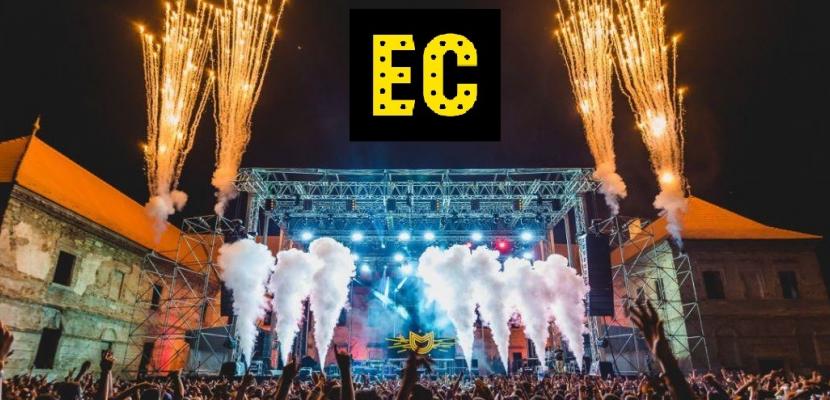Image

Electric Castle (EC)
Published on 07 May 2021

Romania
Nord-Vest
This is the good practice's implementation level. It can be national, regional or local.
About this good practice
EC is an annual music festival held on the domain of Bánffy Castle (the Versailles of Transylvania) in Bonțida village, since 2013. The main aim of the festival is to bring together different social categories through electronic music and contemporary art with built heritage, in one of the most famous renaissance baroque castles in North-Western Romania. For the 7th edition, the festival has received the Best Medium Sized Festival Award at the European Festival Awards, where EC has been always nominated.
According to the partnership between TTF and FTM, a certain amount is given towards the foundation, sum that is used for the restoration of the castle.
Due to the fact, that the ownership of the castle is private (with the TTF having full administration rights), the heritage objective is not eligible for national program restoration funds. In this context, the administrator of the castle, has found alternative ways of financing the restoration of the castle.
Every year, for 4-5 festival days, there are aprox. 150.000 to 200.000 participants from all over Europe at the festival, spending time among the ruins of the castle, raising awareness toward the situation of built heritage in Romania.
There are two main beneficiaries of the festival:
- TTF, as it can go on yearly with the restoration of the castle
- the region itself, through HoReCa service providers and the economic advantages for the local community, through villagers’ accommodation and traditional meals.
According to the partnership between TTF and FTM, a certain amount is given towards the foundation, sum that is used for the restoration of the castle.
Due to the fact, that the ownership of the castle is private (with the TTF having full administration rights), the heritage objective is not eligible for national program restoration funds. In this context, the administrator of the castle, has found alternative ways of financing the restoration of the castle.
Every year, for 4-5 festival days, there are aprox. 150.000 to 200.000 participants from all over Europe at the festival, spending time among the ruins of the castle, raising awareness toward the situation of built heritage in Romania.
There are two main beneficiaries of the festival:
- TTF, as it can go on yearly with the restoration of the castle
- the region itself, through HoReCa service providers and the economic advantages for the local community, through villagers’ accommodation and traditional meals.
Resources needed
The organization of the festival itself consists of at least 120 persons, staff and volunteers, during 3 months in advance, every year. The sum needed for the organisation are confidential, but it can be approximated to the amount of 1.1 – 1.5 mil. EUR/year.
Evidence of success
The most evident measurement of success can be traced in two directions:
a. an early 30% exponential growth of participants: from 32000 participants (2013), 76000 participants (2014), 97000 participants (2015), to over 171000 participants (2017) and 231.000 (2019)
b. the reutilisation of the castle’s main building, mostly those spaces that have not been used since 1944 and were restored partially with funding from EC incomes.
It became both a social community and an economic model.
a. an early 30% exponential growth of participants: from 32000 participants (2013), 76000 participants (2014), 97000 participants (2015), to over 171000 participants (2017) and 231.000 (2019)
b. the reutilisation of the castle’s main building, mostly those spaces that have not been used since 1944 and were restored partially with funding from EC incomes.
It became both a social community and an economic model.
Potential for learning or transfer
The model shows, first of all the communities’ need for cultural and built heritage, in the aspect of “income generator culture”. By generating a cultural event around a brand including heritage sites, the main line of rehabilitation is achieved: the story is being told - the story is being sold.
In the present case, the state (even if in some cases it does not have property right on an objective), could find policies for helping owners to give back the heritage element to the people who use it (and/ or teach others to use it, as the 2008 Europa Nostra Award granted to the TTF shows). In this light, the main decision factor that should transfer the knowledge to itself should be the state. In such a form, the state would gain economic benefits, and the owners of the castles not only would survive, but would be motivated in “adopting” other monuments as well.
In the present case, the state (even if in some cases it does not have property right on an objective), could find policies for helping owners to give back the heritage element to the people who use it (and/ or teach others to use it, as the 2008 Europa Nostra Award granted to the TTF shows). In this light, the main decision factor that should transfer the knowledge to itself should be the state. In such a form, the state would gain economic benefits, and the owners of the castles not only would survive, but would be motivated in “adopting” other monuments as well.
Further information
Website
Good practice owner
You can contact the good practice owner below for more detailed information.
Organisation
Transylvania Trust Foundation - Cluj Napoca (TTF), Festival Tickets Management Ltd. (FTM)

Romania
Nord-Vest
Contact
Project Management